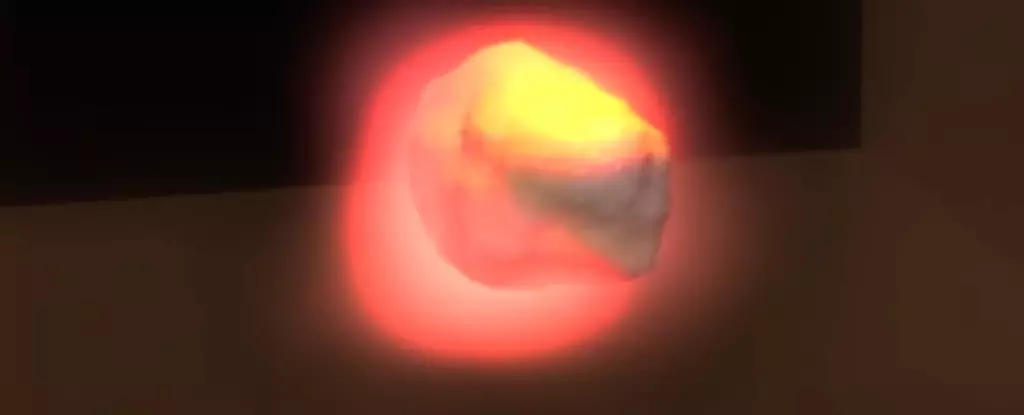For decades, scientists have gazed skyward, wondering about the potential for life beyond Earth, and Mars has stood out as one of our most promising candidates. The recent discovery made by NASA’s Curiosity rover adds a thrilling chapter to this compelling narrative. The detection of the largest organic molecules ever identified on Mars serves as an extraordinary milestone in our quest to uncover whether life has ever existed on the red planet. This discovery is not merely a technical achievement; it reflects the growing capability of space exploration to enhance our understanding of life’s complexities in places beyond Earth.
The Significance of Organic Molecules
At the heart of this groundbreaking discovery are long-chain organic molecules thought to be remnants of fatty acids. These molecules, built from carbon, hydrogen, and oxygen, suggest a complex chemical environment capable of supporting life processes. On Earth, fatty acids are crucial for forming cell membranes—a building block of life. While the specificity of the molecules remains opaque, their existence fuels hypotheses about Mars’s biological potential, igniting hope that microbial life may have once thrived in the planet’s past.
Researchers believe that the samples originated from a 3.7-billion-year-old rock formation known as Cumberland, located in Gale Crater. This area is of particular interest due to its geological features resembling sediment structures formed in ancient lake beds. Given that water is a fundamental ingredient for life as we know it, the exploration of such habitats is paramount. Curiosity had previously unearthed evidence of inorganic compounds, but this time it found something undeniably more intriguing—the long-chain organic molecules that could represent life’s signature.
Complexity and Challenges of Detection
While the fundamental excitement surrounding the presence of these organic molecules is palpable, the methodologies behind their discovery warrant scrutiny. Scientists employed the Sample Analysis at Mars (Sam) instrument for this task, making substantial progress in their search for amino acids—the vital building blocks of life. Instead, the unexpected identification of hydrocarbons such as decane and dodecane has broadened the scope of what we consider potential biosignatures. Yet, as tantalizing as these results are, comprehensively confirming life’s existence on Mars remains an uphill battle.
Microbial life would have been microscopic, making it notoriously challenging to gather definitive evidence. Powerful instruments capable of parsing the nuances of ancient Martian biosphere remain Earthbound or prohibitively large for rovers. As we remain reliant on current technology, further exploration and sophisticated analyses are vital to reveal the true nature of these organic compounds.
The Next Steps in the Research Journey
The quest continues with the prospect of the Mars Sample Return mission—a collaborative effort between NASA and the European Space Agency aimed at bringing Martian samples back to Earth. This ambitious venture stands as humanity’s best chance to definitively answer whether life has ever existed on Mars. The hope is that advanced laboratory techniques available on Earth could elucidate the nature of the organic molecules and unlock the mysteries they hold.
However, ambitions face challenges. An independent review board raised concerns regarding the escalating budget for this mission, prompting discussions about its feasibility. With two revised mission proposals under consideration, the unfolding narrative of Martian exploration remains uncertain, yet fraught with potential. The success of this mission might hinge not only on funding but also on aligning varying institutional priorities that weave the intricate fabric of space exploration.
Examining Earth’s Parallels
While the discoveries on Mars capture our imagination, they prompt a reflection on what we know about life on Earth. Fatty acids serve essential roles in biological functions; thus, the presence of similar compounds on Mars raises captivating questions about life’s universality across planetary boundaries. It challenges us to consider: if life is capable of arising on another world, what could that look like, and under what conditions can it thrive?
The similarities in chemical processes between Earth and Mars forge a compelling argument for the search for life on the red planet. It provides not only an example of shared physical chemistry but also highlights life’s resilience amid adversity. Just as scientists continue to navigate the complexities of searching for life in extraterrestrial environments, these discoveries propel the narrative that Earth’s biosphere might not be as unique as once thought.
A Cautiously Optimistic Future
In the face of uncertainty, one thing is clear: the story of Mars exploratory missions continues to captivate the scientific community and the general public alike. The detection of these organic compounds marks a watershed moment that further solidifies our ambitions toward understanding the mechanisms that govern life. Each new finding propels the conversation forward, raising the tantalizing prospect of revealing uncharted territories of existence in our solar system.
Yet, with excitement must come caution; the road ahead is laden with challenges that demand patience, funding, and innovative solutions. As we probe Mars for signs of life, we must also introspect on what it means to be alive, unearthing not just the past of another world, but perhaps illuminating more profound truths about our existence here on Earth.


Leave a Reply